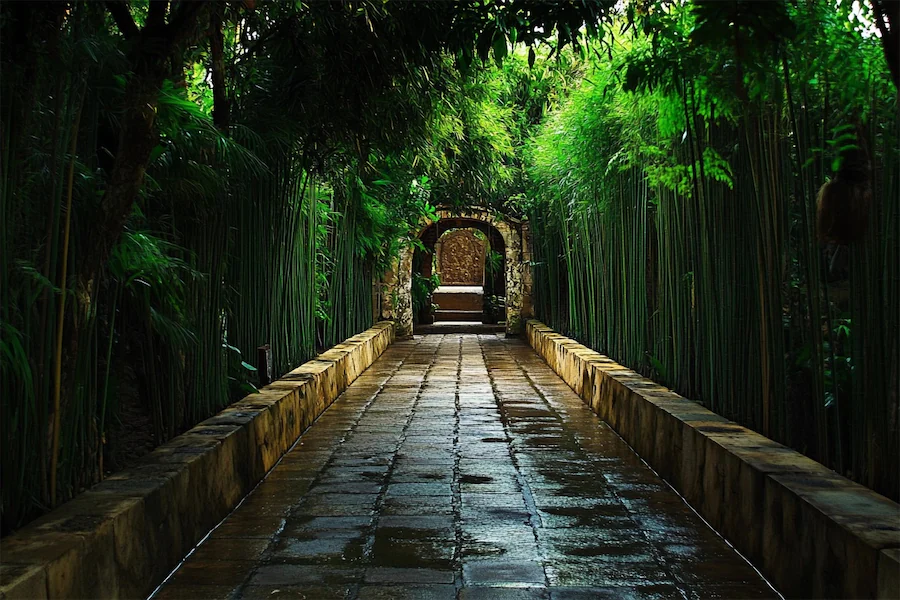Bamboo walls are architectural elements that utilize bamboo—a sustainable and versatile material—to create structures or decorative features in both interior and exterior spaces. Renowned for its strength, flexibility, and rapid growth, bamboo serves as an eco-friendly alternative to traditional building materials.
Introduction to Bamboo Walls
Incorporating bamboo into wall designs offers a unique aesthetic appeal while promoting environmental sustainability. Bamboo walls can function as load-bearing structures, partitions, or decorative accents, adapting to various architectural styles and requirements.
History and Origins of Bamboo Walls
The use of bamboo in construction dates back centuries, particularly in regions where bamboo is abundant, such as Asia and South America. Traditional building techniques employed bamboo for its availability and resilience, crafting homes, bridges, and communal structures. In modern architecture, bamboo has experienced a resurgence as designers seek sustainable materials that offer both functionality and beauty.
Key Features of Bamboo Walls
- Sustainability: Bamboo is a rapidly renewable resource, capable of reaching maturity in just a few years, making it an environmentally friendly building material.
- Strength and Flexibility: Despite its lightweight nature, bamboo possesses a high tensile strength, allowing it to withstand various loads and stresses.
- Aesthetic Versatility: Bamboo’s natural texture and appearance can complement diverse design styles, from rustic to contemporary, adding warmth and character to spaces.
Construction Techniques for Bamboo Walls
Several methods are utilized to construct bamboo walls, each offering distinct structural and aesthetic outcomes:
- Post and Beam Construction: This traditional technique involves using bamboo poles as vertical posts and horizontal beams to form a structural framework. The spaces between the framework can be filled with various materials, such as woven bamboo mats or plaster, to create solid walls.
- Woven Bamboo Panels: Thin strips of bamboo are woven into mats or panels, which can be attached to a supporting framework. This method provides a lightweight and breathable wall solution, often used in tropical climates.
- Bamboo Reinforced Concrete: Bamboo can serve as reinforcement within concrete walls, capitalizing on its tensile strength to enhance the structural integrity of the wall. This hybrid approach combines the benefits of both materials.
Applications of Bamboo Walls
- Residential Buildings: Bamboo walls are used in homes to create partitions, exterior walls, or decorative features, contributing to a natural and sustainable living environment.
- Commercial Spaces: Restaurants, hotels, and retail stores incorporate bamboo walls to evoke a sense of warmth and eco-friendliness, enhancing the overall customer experience.
- Temporary Structures: Due to its lightweight and easy-to-assemble nature, bamboo is ideal for constructing temporary walls or pavilions for events and exhibitions.
Considerations When Choosing Bamboo Walls
- Treatment and Durability: Proper treatment of bamboo is essential to protect it from pests and environmental degradation. Techniques such as curing, chemical treatments, or carbonization can enhance its longevity.
- Climate Suitability: Bamboo performs well in various climates, but considerations regarding moisture levels and potential for decay should be addressed through appropriate design and maintenance.
- Building Codes and Standards: It’s important to consult local building regulations to ensure that bamboo construction meets safety and performance standards.
Conclusion
Bamboo walls offer a harmonious blend of sustainability, strength, and aesthetic appeal. By embracing this versatile material, architects and builders can create environmentally responsible structures that resonate with natural beauty and cultural significance.
